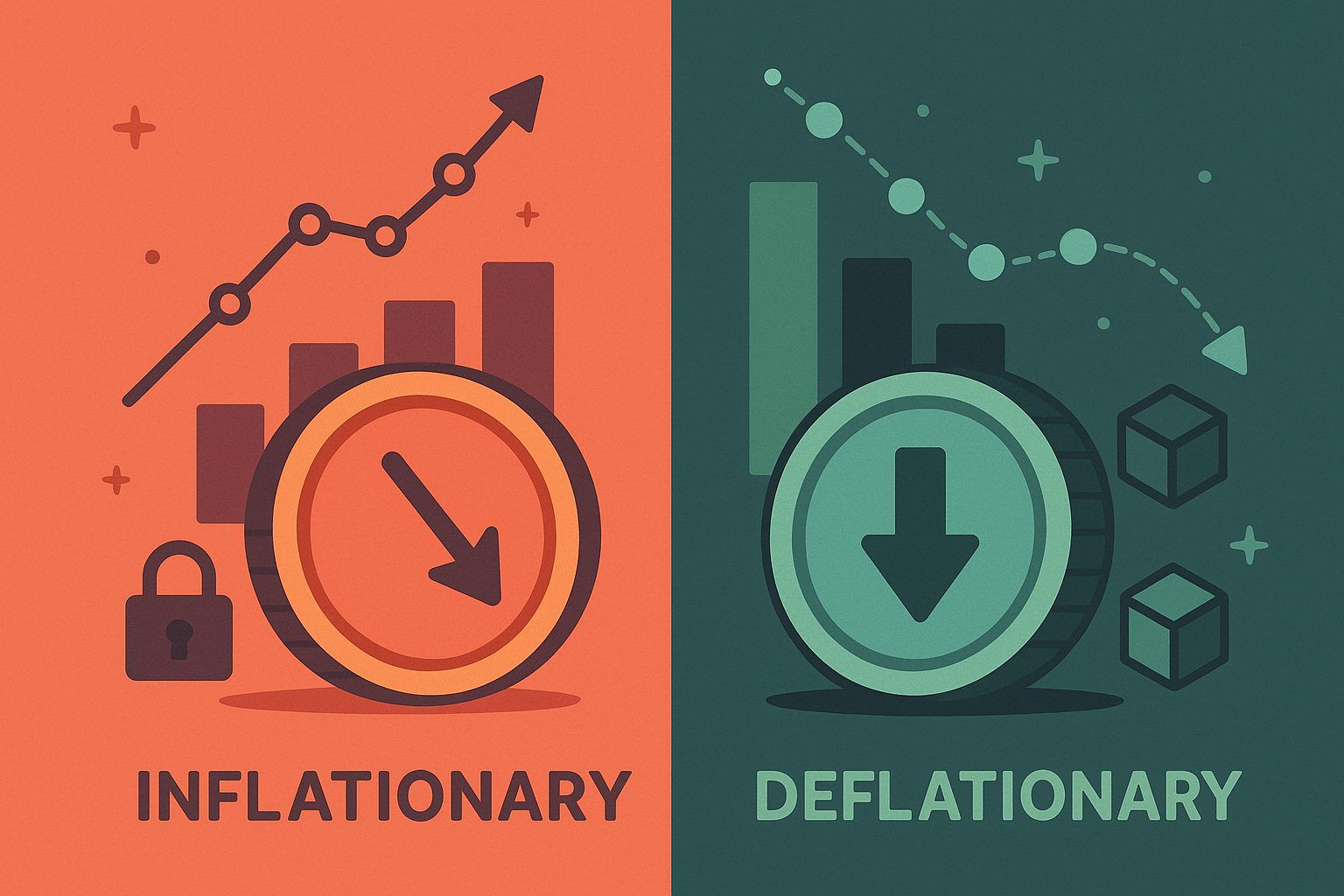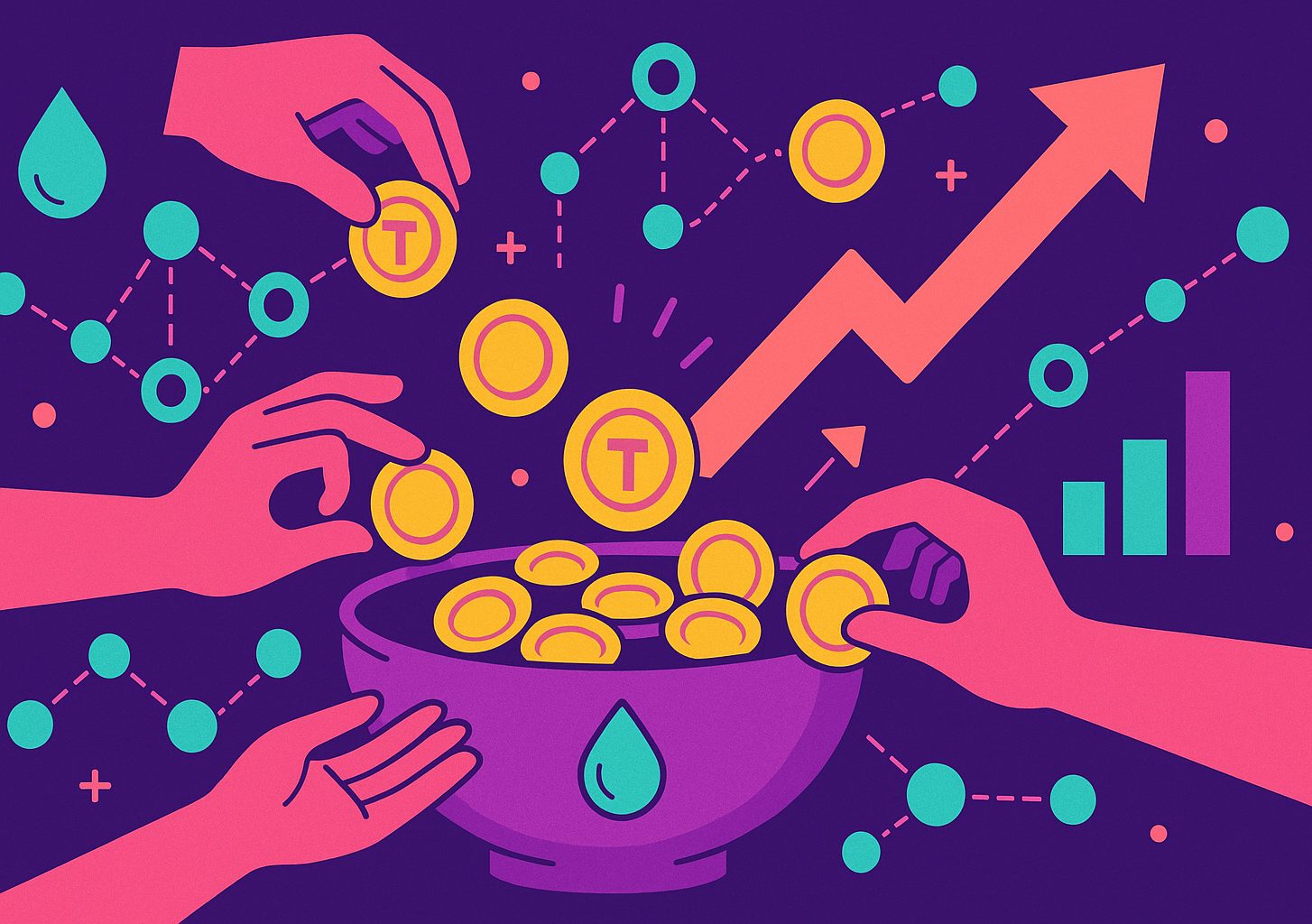The Allure of Digital Scarcity: Why Deflation Matters
In an era where digital assets can be replicated endlessly, creating a sense of true scarcity has become paramount for driving value. Traditional cryptocurrencies like Bitcoin popularized this concept through fixed supplies, but a new wave of blockchain projects is taking it a step further by embedding deflationary mechanisms directly into their economies. Deflationary token economies harness the power of strategic token burns to remove supply, cultivate demand, and ultimately reward holders. By understanding the psychology of scarcity and the technical underpinnings of deflationary models, project teams can design ecosystems that not only attract initial backers but also sustain long‐term growth.
Scarcity has always been a cornerstone of economics. In physical markets, gold’s limited supply imbues it with lasting appeal; in digital realms, deflationary tokens emulate that effect on the blockchain. When tokens are regularly burned—sent to an irrecoverable address—they become progressively rarer, which can stimulate price appreciation and foster community excitement. Yet, unlike fixed‐cap systems, deflationary economies introduce a dynamic element: the supply actively contracts in response to usage or revenue. This characteristic has profound implications for tokenomics, community incentives, and market psychology, making deflationary designs a powerful tool for sustainable crowdfunding and decentralized finance.
Burning Bright: Anatomy of a Token Burn
At its core, a token burn is deceptively simple: tokens are destroyed, reducing the total supply. However, crafting an effective burn mechanism requires careful consideration of timing, quantity, and triggers. Some projects tie burns directly to transaction fees, allocating a small percentage of each on‐chain interaction for destruction. Others adopt periodic burn events, where tokens accumulated in a reserve from primary sales or platform revenues are incinerated at set intervals. The cumulative effect is clear: each burn event tightens supply, heightening scarcity and incentivizing long‐term holding.
The choice of burn trigger shapes the narrative around a token. Transaction‐linked burns reward active network usage, aligning deflation with real demand. Revenue‐backed burns, by contrast, underscore a project’s commercial success, tying token value to tangible performance metrics. Regardless of the approach, transparency is crucial: backers must see burn events executed on‐chain, ideally via automated smart contracts. This visibility not only builds trust but also amplifies marketing narratives, fueling anticipation for each forthcoming burn and reinforcing the perception of an ever‐shrinking supply.
The Art of Scheduling: Designing Smart Burn Cadences
A one‐time burn can spark excitement, but sustained deflation demands a thoughtful schedule. Continuous burns—where a fraction of every transaction is destroyed—create a steady, predictable contraction. Periodic burns, executed monthly or quarterly, deliver memorable token elimination events that rally communities and media attention. Hybrid schedules combine both approaches, offering the reliability of continuous burns alongside the spectacle of larger, scheduled destructions.
When plotting a burn cadence, projects must balance urgency with stability. A too‐aggressive schedule risks eroding liquidity and triggering sudden price jumps that scare away newcomers. Conversely, overly timid burns may fail to generate noticeable scarcity, diluting the deflationary effect. Robust economic modeling—using historical transaction volume, projected revenue, and community growth forecasts—enables teams to simulate various burn scenarios. By stress‐testing these models against market downturns and surges, founders can identify schedules that sustain healthy token circulation while still driving measurable supply contraction.
Beyond Simple Burns: Advanced Deflationary Mechanisms
While burning tokens outright is effective, innovators are crafting layered deflationary strategies to deepen crypto ecosystems’ resilience. One such tactic is the “buyback‐and‐burn” mechanism, where a project uses platform earnings or a share of network fees to repurchase tokens on decentralized exchanges before burning them. This approach marries deflation with market support, as buybacks tend to prop up token prices, reducing volatility and encouraging investor confidence.
Another frontier is the implementation of burning via staking slashing. In proof‐of‐stake networks, validators or stakers who misbehave face token forfeiture; those seized tokens can be routed to a burn address rather than redistributed. This establishes a punitive deterrent against malicious behavior while simultaneously tightening supply. Coupled with governance modules that allow community votes on burn allocations, these advanced methods weave deflationary economics directly into the protocol’s security and decision‐making fabric.
Balancing Act: Preserving Liquidity Amid Deflation
Deflationary models generate buzz, but they can inadvertently stifle liquidity if not managed prudently. As supply dwindles, market depth may shrink, leading to wider bid‐ask spreads and sharper price swings. For a crowdfunding‐driven token, where community participation across multiple channels is vital, impaired liquidity can undermine user experience and dissuade new entrants.
To counteract this, projects often set aside a fraction of tokens in a liquidity reserve, ensuring that decentralized exchanges maintain robust pools even as burns activate. Automated market maker (AMM) protocols can be configured to route a percentage of swap fees into liquidity pools rather than burns, preserving depth while enabling growth. Additionally, staggered vesting for team and advisor allocations prevents sudden reserve releases that could flood markets. By carefully calibrating reserve policies alongside burn schedules, founders can safeguard smooth trading dynamics while still reaping deflation’s value‐boosting benefits.
Algorithmic Deflation: Smart Contracts in Control
Static burn rules have their limits; algorithmic deflation injects real‐time adaptability into token supply. In such systems, smart contracts monitor on‐chain indicators—transaction velocity, price deviation from a peg, or network activity—and trigger automated burns to correct imbalances. Known as a seigniorage—or elastic supply—model, this approach adapts supply in response to demand, aiming to stabilize token value or achieve targeted scarcity ratios.
Designing effective algorithms requires granular tuning. Overly sensitive triggers can lead to rapid supply swings, destabilizing markets. Under‐responsive models risk failing to curb inflationary pressures during demand spikes. Experienced teams employ multi‐parameter governance, where minor adjustments occur automatically but major supply changes require on‐chain voting. Through iterative testing on testnets and robust oracle integrations for accurate metrics, algorithmic deflation can offer a transparent, self‐regulating supply mechanism that evolves alongside network usage.
Power to the People: Community‐Driven Deflation Governance
Deflationary tokens thrive when communities feel empowered to steer protocol parameters. Incorporating governance tokens or voting rights into burn mechanisms ensures that stakeholders have a voice in deflationary policy. Whether it’s adjusting burn rates, modifying triggers, or reallocating buyback budgets, community proposals and referenda democratize supply decisions and foster collective ownership of tokenomics.
Effective governance structures balance influence between early backers, active contributors, and broader token holders. Vesting schedules, delegation models, and quadratic voting are among the tools that can mitigate plutocratic control. By coupling transparent on‐chain proposals with off‐chain discussions—through forums, social media, and governance dashboards—projects can cultivate informed debate around deflationary adjustments. This participatory ethos not only bolsters legitimacy but also helps preempt contentious changes that might fracture community cohesion.
Learning from the Trailblazers: Case Studies in Deflation
Several blockchain initiatives have demonstrated the tangible benefits of deflationary designs. Take BurnX, a decentralized exchange that allocates a portion of trading fees to token burns each block, leading to a predictable monthly supply contraction that contributed to consistent price appreciation. Meanwhile, TokenCraft implemented a buyback‐and‐burn mechanism funded by platform subscription revenues, which not only amplified scarcity but also signaled to investors that protocol adoption directly fueled deflation.
These examples highlight common success factors: alignment between burn methods and network usage, transparent reporting of burn events, and clear communication of supply metrics via dashboards. Conversely, projects that failed to integrate liquidity safeguards often saw deflation trigger wild price swings, eroding trader confidence. By dissecting both triumphs and missteps, emerging founders can craft deflationary models that avoid historic pitfalls and maximize upside potential.
Common Missteps: Avoiding Over‐Deflation and Market Shock
The promise of ever‐shrinking supply is alluring, but unchecked deflation can backfire. Excessive burns relative to network activity can hollow out circulating liquidity, leaving markets fragile. Aggressive early burns may excite speculators but can leave later participants holding thinly traded tokens. Furthermore, opaque burn processes—where off‐chain decisions dictate on‐chain actions—can breed skepticism and open the door to manipulations.
Mitigating these risks demands a holistic approach. Project leads should implement transparent on‐chain burn contracts, provide real‐time analytics on supply reduction, and engage in ongoing dialogue with stakeholders. Periodic audits by reputable firms can validate that burns occur as promised. Equally important is scenario planning: teams must model extreme bear markets to ensure that deflationary protocols do not exacerbate downturns. By combining robust governance, transparent tooling, and conservative initial burn rates, token economies can harness deflation without tipping into instability.
Charting the Path Forward: Innovations on the Horizon
Deflationary tokenomics continues to evolve, with emerging ideas poised to deepen impact. Programmable bonding curves are gaining traction, enabling token prices to adjust dynamically based on supply‐demand curves embedded in smart contracts. Cross‐chain bridges designed with deflationary hooks could facilitate coordinated burns across multiple networks, amplifying scarcity effects. On the governance front, reputation‐weighted voting systems promise more nuanced stakeholder influence over deflation policies.
Environmental considerations are also driving novel approaches: some projects burn a percentage of token supply in tandem with verified carbon offsets, creating a dual deflationary‐sustainability narrative. Others are exploring “social burns,” where community milestones—such as content creation or bug detection—unlock collective burn triggers, blending deflation with participatory engagement. As these innovations unfold, early adopters will need to remain agile, aligning protocol parameters with both technological advances and evolving community expectations.
Bringing It All Together: Blueprint for Deflationary Success
Designing a deflationary token economy is an intricate balancing act that merges economics, governance, and community psychology. Founders embarking on this journey should start by defining clear objectives: is the primary goal value appreciation, network security, or user engagement? From there, they can select burn mechanisms—transaction‐linked, revenue‐backed, or buyback‐and‐burn—that resonate with their economic model. Algorithmic layers can add adaptability, while governance frameworks ensure stakeholder buy‐in for major supply shifts.
Continuous monitoring and transparent reporting are nonnegotiable: dashboards showcasing real‐time supply changes, burn event logs, and reserve statuses build trust and inform future adjustments. Scenario simulations help teams anticipate edge cases, safeguarding against liquidity crises. Above all, ongoing dialogue with the community transforms token holders into active stewards of the economy, aligning incentives and fostering long‐term loyalty. By weaving together these elements into a cohesive strategy, projects can leverage deflation to create a self‐reinforcing loop of scarcity, engagement, and sustained value.
The Transformative Power of Deflationary Design
In the dynamic world of blockchain crowdfunding and decentralized finance, deflationary token economies represent a transformative force. By intentionally contracting supply through well‐structured burns, buybacks, and algorithmic controls, projects can instill genuine scarcity, reward loyal supporters, and drive meaningful network effects. Yet, deflationary power must be wielded with care—anchored in robust governance, transparent execution, and adaptive modeling. When executed thoughtfully, deflationary strategies not only elevate token value but also cement deep community bonds that endure far beyond initial launch buzz. As blockchain innovation continues to accelerate, mastering the art of deflation will be a defining hallmark of sustainable, value‐driven token ecosystems.




